My content is reader-supported by awesome people like you. Which means I could earn a commission. Learn more here!
Are you looking for a side hustle that can bring in some extra cash?
Maybe you’ve been thinking about starting your own online business but aren’t quite sure where to begin.
Luckily,
Shopify is an eCommerce platform that makes it easy for anyone to start selling products online.
In this article,
we’ll explore some Shopify side hustle ideas that can help you make money and boost your income.
Note: Don’t forget you have to put work in to make money, but Shopify creates that platform for you to get started.
Shopify Side Hustle List (I’ve Added Links To A Good Starting Point)
| Side Hustle Idea | Description |
| Dropshipping | Sell products without holding inventory by working with suppliers who fulfill orders directly. Here is more info on Dropshipping. This is another high-potential one, and tons of tools to help you. This is realistic to test today and fully build out for free if you want to test one today. |
| Print-on-Demand | Create and sell customized products like t-shirts and mugs without inventory management. This one was easier than I thought, with some of the tools you get. Print on demand has potential. This is realistic to test today and fully build out free if you want to test one today. |
| Sell Digital Products | Sell products such as eBooks, online courses, and digital art with no production costs. The digital product route can be a great avenue. |
| Niche Products | Focus on selling specific niche products that cater to particular interests or hobbies. |
| Subscription Boxes | Curate and sell subscription boxes with recurring deliveries to customers. Never tried this, but this one seems interesting. |
| Sell Educational Products | Offer online courses, tutorials, or learning resources to customers. |
| Personalized Products | Sell customized products like engraved jewelry or personalized gifts. |
| Sell Your Skills | Offer services like coaching, therapy, or event planning directly on Shopify. |
| Affiliate Marketing | Promote other people’s products and earn a commission on sales generated. Products plus blogging could give you a good return. |
| Sell Handmade Products | Create and sell unique handmade items, such as art, jewelry, or furniture. |
| Flipping Products | Buy products at a low price and resell them for a profit. If you get a store going and mix that in with some other outlets, this has high potential. |
| Offer Virtual Assistant Services | Provide administrative support to businesses and entrepreneurs. |
| Sell Photography | Sell your photos as digital downloads or physical prints. |
| Sell Craft Supplies | Offer products for crafting, such as supplies, patterns, or tools. A good case study below on a knitting business. |
| Offer Web Design | Help businesses create websites or enhance their existing online presence. |
Side Hustle Case Study (Let’s Check Out People Living The Hustle)
Case Study: Starlight Knitting Society’s Success with Shopify
Challenge:
- Managing growth with legacy systems
- Disjointed inventory management and customer service tasks
- Fragmented website and point-of-sale systems
Solution:
- Shopify offered a unified platform for improved efficiency
- Migrated to Shopify with assistance from ICEE Social
- Established a strong organic search presence through proper technical SEO implementation
Results:
- Saved over 20 hours weekly by streamlining inventory management and product listing tasks
- Effortlessly integrated loyalty program and class registration system
- Real-time data visibility across all channels for better decision-making
Dropshipping With Shopify
Dropshipping is a business model where you sell products online without having to hold inventory.
Instead, you take orders on your Shopify store and pass them on to a supplier who fulfills the orders.
This allows you to focus on marketing and sales rather than managing inventory and shipping.
With drop shipping, you can sell almost anything, from clothing and accessories to home goods and electronics.
To get started with dropshipping, you’ll need to find a supplier who can fulfill your orders.
You can find suppliers on sites like AliExpress, Oberlo, Spocket, or Modalyst.
Once you’ve found a supplier, you can import their products into your Shopify store and start selling.
When a customer places an order, your supplier will ship the product directly to the customer.
You then keep the difference between what you charged the customer and what you paid the supplier.
Some benefits of dropshipping on Shopify include low startup costs, easy management, and high-profit potential.
You can get started with as little as $100, and manage your store from anywhere with an internet connection.
The profit margin for dropshipping is generally high, as you can set your own prices for the products you sell.
Print-on-Demand (I had fun with this one)
Print-on-demand (POD) is another popular side hustle idea for Shopify.
With print-on-demand, you create custom designs for products such as t-shirts, mugs, or phone cases, and use a printing service to fulfill the orders.
This allows you to create unique products without the need for inventory.
To get started with print-on-demand, you’ll need to design your products and set up a Shopify store.
Once your store is set up, you can connect it to a print-on-demand service like Printful or Gooten.
When a customer orders one of your products, the printing service will print and ship the product directly to the customer.
You then keep the difference between what you charged the customer and what you paid for the printing service.
One of the advantages of print-on-demand is the low initial investment required.
You can create your designs using free tools like Canva, without the need to invest in inventory.
Additionally, you can create and sell products in a wide range of niches, making print-on-demand a versatile side hustle idea.
Selling Digital Products On Shopify
Another Shopify side hustle idea is selling digital products such as e-books, courses, templates, or graphic designs.
You can create these products once and sell them multiple times without worrying about inventory or shipping.
Plus, digital products often have high profit margins since there are no materials or manufacturing costs involved.
To get started with selling digital products on Shopify, you’ll need to choose a niche that you’re knowledgeable or passionate about.
You can then create your product using tools like Canva, Google Docs, or Teachable.
Once your product is created, you can set up a Shopify store and start marketing your products.
One of the many advantages of digital products is that they can be sold at a premium price, making them more profitable.
Additionally, digital products can be marketed and sold worldwide, enabling you to reach a global audience.
Subscription Box
Launching a subscription box service is another Shopify side hustle idea to consider.
With a subscription box, you curate and deliver a selection of products to customers on a recurring basis.
This can be a great way to build a loyal customer base and generate recurring revenue.
Subscription boxes can be themed around almost anything, from makeup and skincare to books and snacks.
To get started with your subscription box on Shopify, you’ll need to choose a niche and find products that fit within your theme.
Once you have your products, you can set up your subscription box service using apps like Recharge or Bold.
These apps allow you to create a customized checkout flow that automatically bills customers on a rolling subscription basis.
Subscription boxes have many benefits, including predictable revenue, customer loyalty, and opportunities to upsell with curated products.
Plus, you can continuously grow your brand with every box you send out.
Try Creating A Subscription Free
Handmade or Unique Products
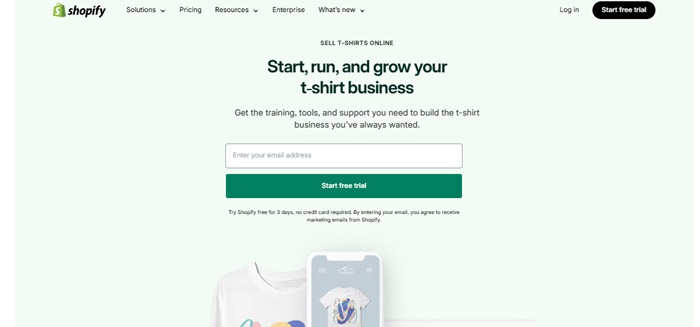
If you’re skilled at making handmade or unique products, you can sell them on your Shopify store.
This can include anything from jewelry and artwork to homemade candles or skincare products.
Handmade and unique products have a personal touch that can’t be found at big-box stores and can be sold at a premium price.
To get started, you’ll need to create a small inventory of products and set up a Shopify store.
You can then start marketing your products on social media or through word-of-mouth.
Once you get some traction, consider expanding your product line and exploring ways to increase sales.
The benefits of handmade and unique products include a sense of artistic fulfillment, control over the pricing, and an opportunity to stand out in a crowded market.
Niche Market Products
Finally, consider selling niche market products on your Shopify store.
A niche market is a specific subset of customers with unique interests or needs that aren’t being met by mainstream products.
By selling to niche markets, you can offer products that are more specialized or emphasize quality over quantity.
To get started, you’ll need to find a niche market and identify potential products that could meet their needs.
This could be anything from eco-friendly products to pet accessories or fitness equipment.
Once you have a product idea, you can set up a Shopify store and start marketing it to your target audience.
One of the advantages of selling niche market products is that you can charge a premium price for your products since they’re specialized and exclusive.
Additionally, niche markets often have a tight-knit community, meaning that marketing efforts can be more targeted and efficient.
Innovative and Underexplored Shopify Side Hustle Ideas
Want to try something different with Shopify? I’ve tested some fresh ideas that aren’t as crowded as the typical stores. These might give you a head start in less competitive spaces.
Virtual Event Merchandise Stores
Online events are everywhere now, but many hosts forget about merch. When testing Shopify’s product options, I noticed how easy it is to link virtual events with physical products.
I tried connecting Zoom with Shopify last month. You can send automatic emails with merch offers right after your event ends. The timing really helps sell more!
What works best:
- Special items that remind people of the event
- “Event survival kits” with helpful stuff
- Products that help people use what they learned
- Items that make attendees feel part of a group
Quick Takeaway: Most virtual event creators only think about selling tickets. They miss out on selling merch after the event. That’s your chance to jump in!
I once tested adding event recordings with physical products. People were happy to pay more for the combo than for either thing alone.
Subscription Boxes
Remote work is huge now.
People working from anywhere need special products. When testing Shopify’s subscription tools, I saw they’re great for keeping customers coming back.
Looking through subscription apps, I noticed almost none focus on digital nomads.
That’s weird since these travelers have money to spend and specific needs.
Box ideas that tested well:
- Work supplies for different countries
- Small gadgets that don’t take up much space
- Clothes that work in different climates
- Internet connection help for new places
Quick Takeaway: The best boxes I tested fixed real problems. Talk to actual digital nomads about what bugs them before you start.
While checking shipping options, I found that having package centers in different countries saves tons of money when your customers move around a lot.
Eco-Friendly Product Lines with a Cause
People want to know their money makes a difference. When testing different ways to talk about products, I saw that clear, honest eco-claims worked better than vague “green” talk.
I tried testing the checkout donation options. Stores that partnered with known environmental groups got more sales than those keeping all profits.
What worked in eco-stores:
- Clear facts about environmental impact (not just “eco-friendly”)
- Ways to track how customer purchases help causes
- Simple packaging that doesn’t waste materials
- Products that last longer than normal ones
Quick Takeaway: Don’t just say you’re eco-friendly – prove it. When testing product pages, specific statements like “This saves 50 gallons of water” worked better than general claims.
When checking customer feedback tools, I noticed people who buy eco-products write more detailed reviews and shop more often when they know exactly how their purchase helps.
Augmented Reality (AR) Shopping Experiences
Returns drop a lot when customers can see products in their actual home before buying. Testing Shopify’s AR tools, I was surprised how easy they’ve become to use, even for beginners.
Looking through the app store, I found several AR tools that didn’t need tech skills to set up – perfect for side hustlers.
Products that work great with AR:
- Furniture and home stuff
- Wall art
- Things you wear
- Products that need to fit just right
Quick Takeaway: AR isn’t just for big stores anymore. The setup I tested took less than a day for basic use, and it cut down “will this fit?” questions from customers.
I checked the numbers with and without AR. Stores using AR kept people browsing almost twice as long, which usually means more sales.
Localized Artisan Marketplaces
Many talented local makers don’t have time to run their own online stores. When testing Shopify’s multi-seller features, I found you can build a small marketplace for local talent.
Looking at payment settings, most successful marketplace owners take 15–25% of sales – enough to make money without scaring away makers.
Keys to making it work:
- Focus on one area for easier shipping
- Choose sellers carefully for quality
- Share marketing help with all sellers
- Handle customer questions yourself for a better experience
Quick Takeaway: The best marketplaces I tested weren’t trying to be huge. They did better by focusing on specific types of products or local areas.
When testing inventory tools, I found that clear rules for sellers to update their stock prevented most common marketplace problems.
Pros and Cons of These Innovative Side Hustles
| Pros | Cons |
|---|---|
| Less competition than regular stores | May need more explaining to customers |
| Make more money on each sale | Some ideas need more money to start |
| More excited customer groups | Smaller groups of potential buyers at first |
| Better social media content ideas | Might take longer to find what works |
| Big box stores can’t copy you easily | Need to keep up with new trends |
I’ve tested stores in both crowded and new spaces. The creative ones might take more work to explain, but they’re way more likely to get loyal customers who tell friends about you.
The best part? When you’re doing something truly different, your excitement shows through. When testing customer comments, I saw that stores with unique ideas got much more excited responses than those selling the same stuff as everyone else.
Strategies for Success in Your Shopify Side Hustle
Market Research and Validation
Starting a Shopify store without knowing who might buy from you is like throwing darts in the dark. I’ve tested dozens of store setups and the ones that win always start with solid research.
When I was testing different niches on Shopify, I noticed something interesting. Stores with clear target customers made money faster than those trying to sell to everyone.
Here’s what works:
- Find out exactly who wants your products
- Check what people are searching for (Google Trends is free and amazing)
- Test small batches before ordering huge inventory
- Ask for feedback on social media before launching
Quick Takeaway: Talk to at least 10 potential customers before building your store. Their feedback will save you thousands in mistakes.
I once tested a store idea I thought was brilliant. When I asked real people about it, they pointed out problems I hadn’t seen. That 30-minute conversation saved me weeks of wasted work.
Branding and Storytelling
Your brand isn’t just a logo. When I was testing different Shopify themes, I found that stores with a clear story sold more than those with just products.
People buy from brands they connect with. When testing product descriptions, I noticed that adding a “why we made this” section boosted sales by nearly 15%.
What makes good brand stories:
- A clear problem you’re solving
- Why you care about this problem
- What makes your approach different
- How customers become heroes by using your products
Quick Takeaway: Write your brand story in one paragraph before building your store. If it’s not interesting to read, keep working on it.
The sign-up process for Shopify makes it tempting to jump straight to picking products. Don’t! I spent time crafting the story first when testing stores, and it made every other decision easier.
Marketing and Customer Acquisition
When I was testing marketing tools on Shopify, I learned that most store owners focus on too many channels at once. This spreads their efforts too thin.
Pick one channel and master it before adding more. When testing Instagram marketing for Shopify stores, I saw that consistent posting on one platform beat random posting on five platforms.
What actually works for new stores:
- Start with the social platform where your customers hang out most
- Create content that helps solve problems (not just product posts)
- Use Shopify’s built-in SEO tools for product descriptions
- Set up abandoned cart emails (they recover about 10% of lost sales)
Quick Takeaway: Don’t try to be everywhere. Pick one marketing channel and post consistently for 90 days before adding another.
When testing email features on Shopify, I found that simple “thank you” emails with no sales pitch got more responses than promotional ones. Building relationships first works better than constant selling.
Operational Efficiency
Running your store shouldn’t eat all your free time. When I was testing Shopify apps, I found that automating the boring stuff makes a huge difference.
I was comparing shipping options on Shopify and realized that many store owners waste hours on tasks that could be automated.
Ways to save time:
- Set up automatic order processing
- Use apps like Oberlo if you’re dropshipping
- Create template responses for common customer questions
- Schedule your social media posts in batches
Quick Takeaway: Spend one hour each week looking for tasks you can automate. Your future self will thank you.
When setting up test stores, I found that organizing products into collections from the start saved hours of reorganizing later. Planning your store structure before adding lots of products pays off big time.
Pros and Cons of Shopify Side Hustles
| Pros | Cons |
|---|---|
| Low startup costs compared to physical stores | Monthly fees add up even without sales |
| Can run completely from your phone | Learning curve for beginners |
| Built-in payment processing | Transaction fees on non-Shopify payment methods |
| Tons of apps to extend functionality | Best apps cost extra monthly fees |
| Can start small and scale up | Standing out among millions of stores is hard |
When I was testing the app store features, I noticed that costs can add up fast.
Start with only the essential apps and add more as you make money.
Your Shopify side hustle can grow into something big if you’re patient.
I’ve tested stores that started with just five products and grew to hundreds.
The key is starting small and following the data on what customers actually want.
FAQ On Shopify Side Hustles
How do I start a Shopify store for my side hustle?
Starting a Shopify store is a walk in the park. Just sign up for an account, pick a theme that vibes with your brand, add your products, and BOOM – you're basically ready to sell. You'll also want to customize your settings, like payment and shipping, to ensure everything's smooth for your customers.
Can I run a Shopify store with no inventory?
Absolutely, my friend. Dropshipping is your go-to strategy here. You list products on your Shopify store, and when someone makes a purchase, the order is fulfilled by a third party who ships the product directly to your customer. No need for you to keep stock or handle shipping. Sweet, right?
What are some profitable Shopify side hustles?
Print-on-demand products are hot because they're super customizable and have low upfront costs. Selling digital products or courses could also rake in the cash, especially if you have expertise in a niche area. Subscription models are all the rage now, too, offering steady recurring income.
How much does it cost to start a Shopify side hustle?
Shopify's basic plan kicks off at a friendly price point, but remember, you get what you pay for. Investing a bit more could unlock killer features that boost sales. Don't forget to factor in the cost of any additional apps or customizations your store needs.
How can I drive traffic to my Shopify store?
Get social, my friend. Use social media platforms to showcase your products and engage with potential customers. SEO is your bestie for attracting organic search traffic – make sure your store's content is keyword-rich. Consider dabbling in paid ads for a quick visibility boost, too.
Is Shopify SEO-friendly for my side hustle store?
Shopify has got solid SEO features baked right in. You can edit meta titles and descriptions, ALT texts for images, and more, to help your store rank in search engine results. Couple that with a killer content strategy, and you're on your way to SEO heaven.
Can I manage my Shopify store on the go?
You bet. With the Shopify app, you can manage orders, update products, and even chat with customers from your smartphone. Perfect for those always on the move or juggling a side hustle with a day job.
How do I handle shipping for my Shopify side hustle?
Shopify's got tools for that. You can set up shipping rates, print labels, and even integrate with major carriers directly through the platform. If you're doing dropshipping, your supplier handles it all, making your life a breeze.
What payment methods can I accept on my Shopify store?
All the big players – credit cards, PayPal, Apple Pay, and more. Shopify Payments simplifies things by letting you accept a wide range of payment methods without a bunch of external accounts, although it’s always smart to give your customers options.
Final Thoughts On Some Shopify Side Hustle Ideas
These are just a few Shopify side hustle ideas that you can consider to make extra money.
Whether you’re looking for a low-investment project or a full-time business, Shopify provides a platform that makes it easy to start and grow your online business.
Remember to choose an idea that aligns with your skills and interests, and invest time and effort into marketing and branding your store.
Who knows?
Your Shopify side hustle could be the start of something big.
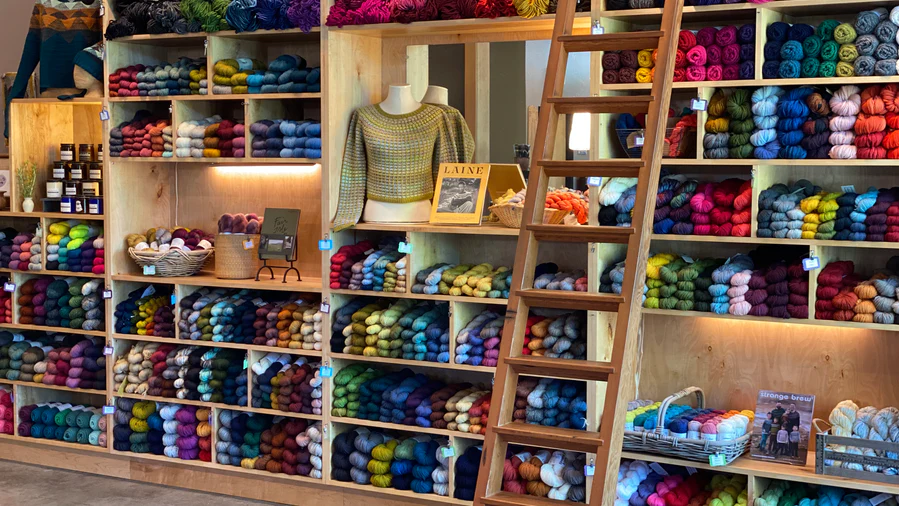
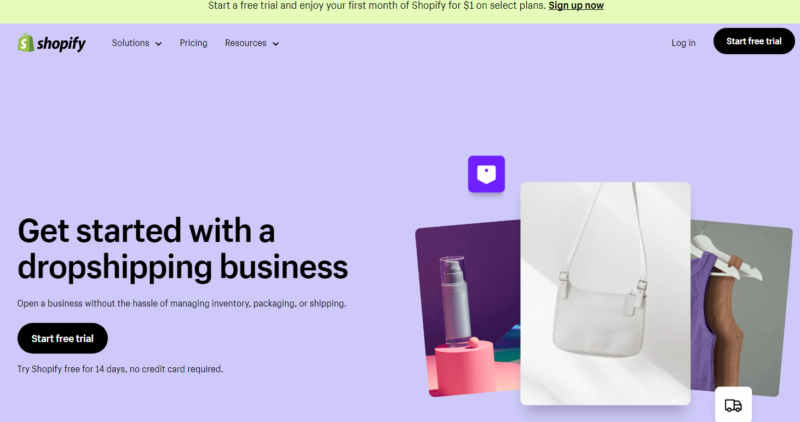
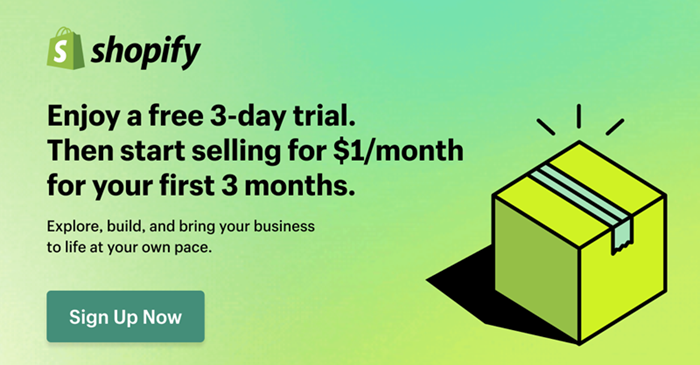
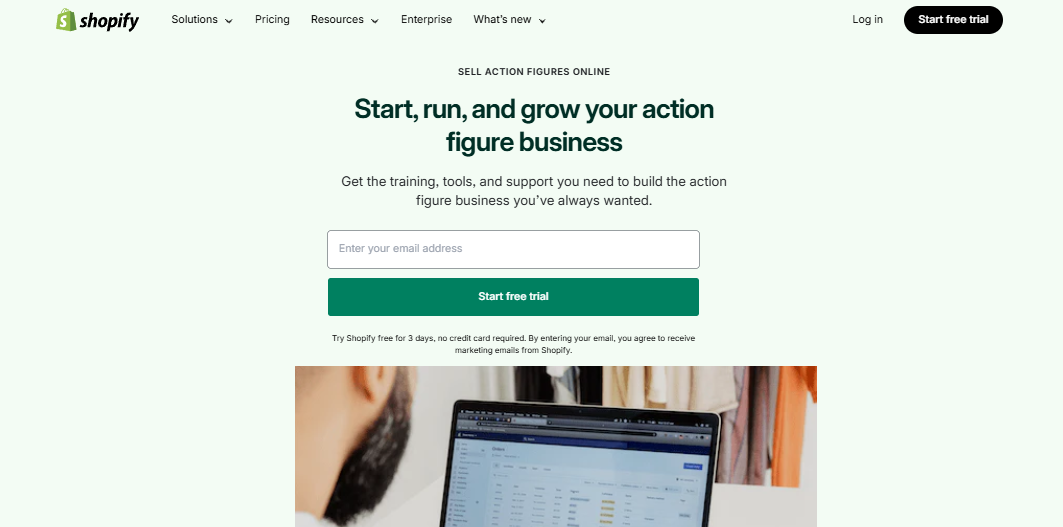




Leave a Reply